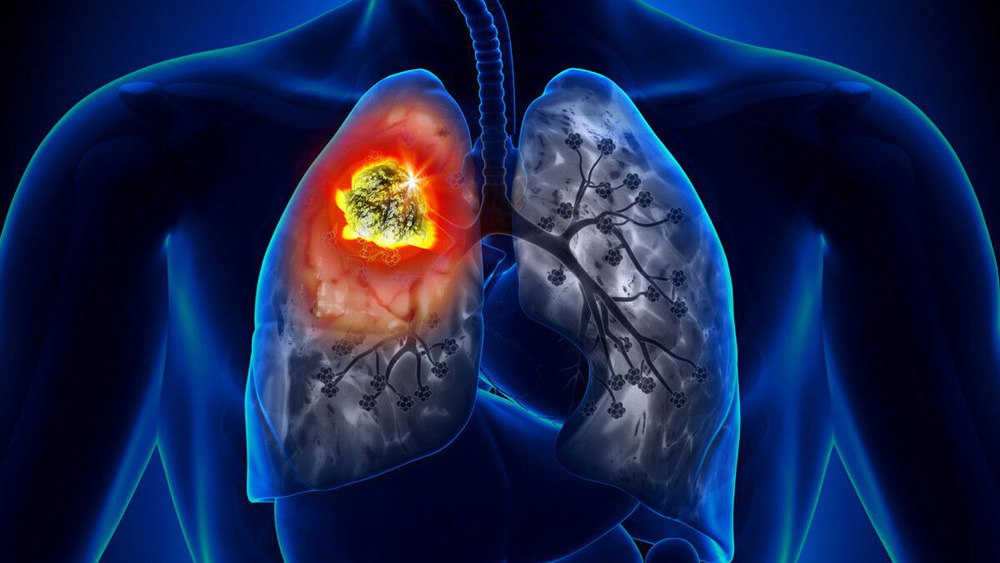Lung cancer is one of the leading causes of cancer deaths worldwide. Small cell lung cancer (SCLC) is a highly aggressive and lethal malignancy that results in rapid tumor growth, early metastasis, and acquired resistance to therapy. SCLC accounts for about 13% of all lung cancer cases, is usually diagnosed at an advanced stage when it has metastasized, and is one of the cancers with the lowest 5-year survival rates and an extremely poor prognosis.
Recently, Northwestern University researchers published an article in Science Advances and discovered for the first time the key protein C11orf53 that regulates the P subtype of small cell lung cancer (SCLC-P) and named it POU2AF2. The study also revealed the therapeutic potential of targeting the POU2AF2/POU2F3 heterodimer in human SCLC.
Research on SCLC has progressed in recent years, and the classification of SCLC is defined by the relative expression of 4 major molecular isoforms of key lineage-specific transcriptional and co-transcriptional regulators: ASCL1 (SCLC-A), NEUROD1 (SCLC-N) , YAP1 (SCLC-Y) and POU2F3 (SCLC-P).
The research team has previously identified an important epigenetic coregulator and biomarker associated with SCLC-A molecular isoforms, ASXL3, which acts as a scaffold protein that drives lineage-specific transcriptional programming. These studies demonstrate the need to identify and study these subtype-specific key factors globally to gain a deeper understanding of the underlying mechanisms regulating SCLC tumorigenesis, which may aid in SCLC treatment decisions and create much-needed individuals strategy.
This latest study is the first to identify 4 SCLC molecular subtype-specific dependent factors, identifying 48 SCLC-A subtype genes, 88 SCLC-N subtype genes, 66 SCLC-P subtype genes, and 177 SCLC subtype genes -Y subtype gene. These genes were defined as selectively essential genes in each SCLC subtype. Among them, the researchers found a new gene, C11orf53, which has not yet been reported, which is the most dependent gene for the survival of SCLC-P subtype cells. This gene may serve as a new biomarker for SCLC-P subtype cells. Based on its new functional definition, the researchers renamed the gene POU2AF2.
Further studies showed that the POU2AF2 gene is essential for maintaining SCLC-P cell viability. Consistent with in vitro cell growth results, gene deletion of POU2AF2 in an in vivo xenograft model significantly inhibited tumor growth (P=0.0033) and delayed further disease progression in mice (P=0.0023).
Next, we demonstrated at the biochemical level that POU2AF2 regulates lineage-specific gene expression at super-enhancers, and that loss of POU2AF2 reduces enhancer activity and chromatin accessibility.
Finally, the researchers stably expressed GFP-tagged POU2AF2 via a green fluorescent protein (GFP)-tagged protein, and by mass spectrometry analysis, found that POU2F3 was one of the best candidates for interaction with POU2AF2. In NCI-H526 and NCI-H211 cells, POU2F3 and POU2AF2 overlap significantly throughout the genome, suggesting that POU2AF2 is a co-activator of POU2F3 in SCLC cells.
Subsequent mechanistic exploration experiments found that the POU domain in the POU2F3 protein is crucial for the interaction with POU2AF2. POU2AF2 directly interacts with POU2F3 and is recruited to chromatin by POU2F3. Depletion of POU2AF2 reduces enhancer H3K27ac levels and chromatin accessibility, resulting in decreased POU2F3-dependent gene expression.
In conclusion, this study reveals the potential impact of novel therapeutic approaches targeting POU2AF2 or POU2AF2/POU2F3 heterodimers on SCLC-P subtypes. Therefore, the establishment of small-molecule inhibitors or peptide drugs that can disrupt the POU2AF2/POU2F3 interaction may specifically inhibit POU2F3-dependent transcriptional programming in SCLC cells, thereby facilitating the development of more personalized SCLC treatments.
References:
POU2AF2/C11orf53 functions as a coactivator of POU2F3 by maintaining chromatin accessibility and enhancer activity. Aileen Patricia Szczepanski et al. Science Advances (2022)









